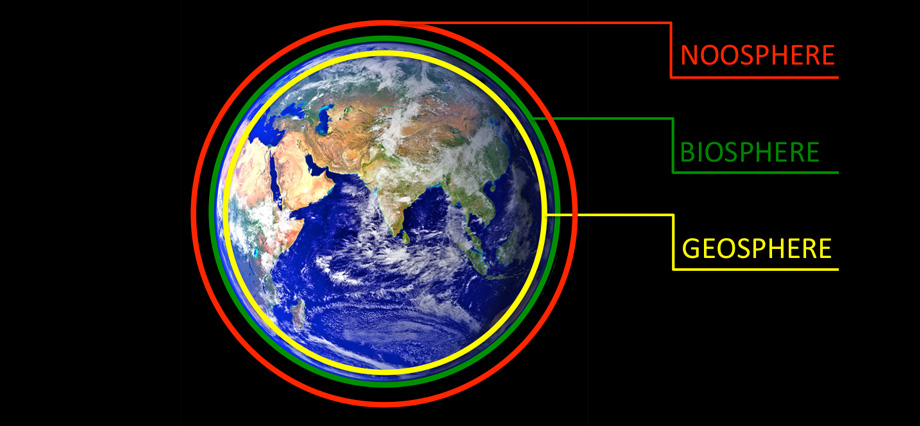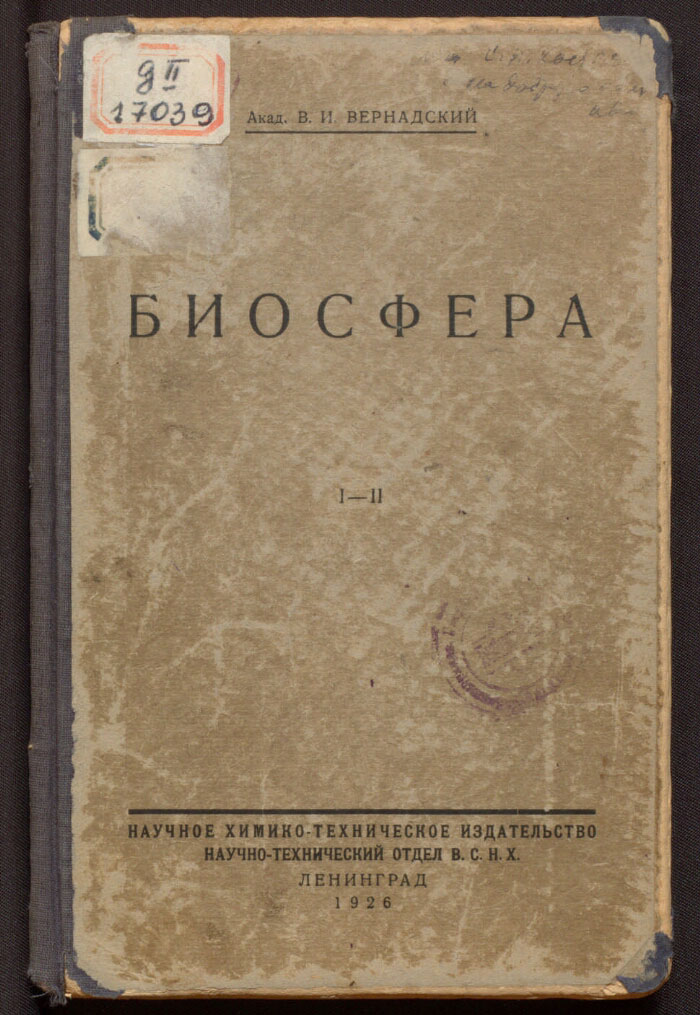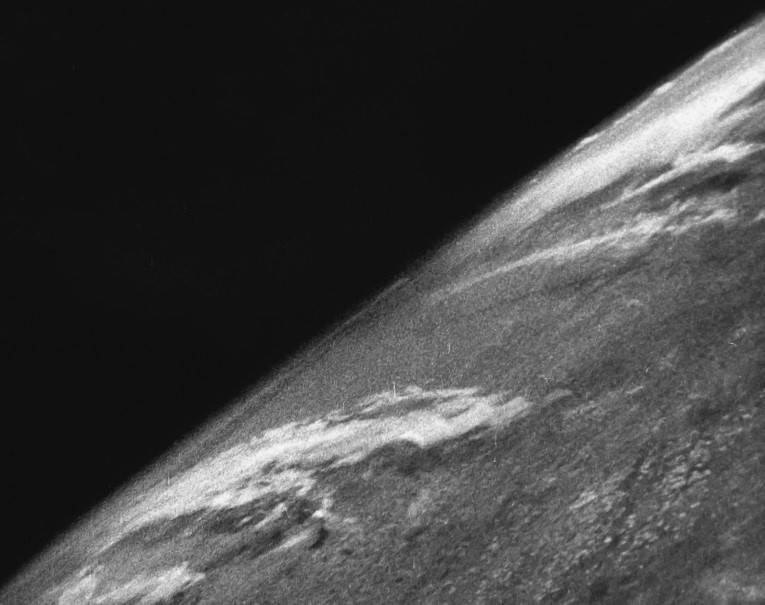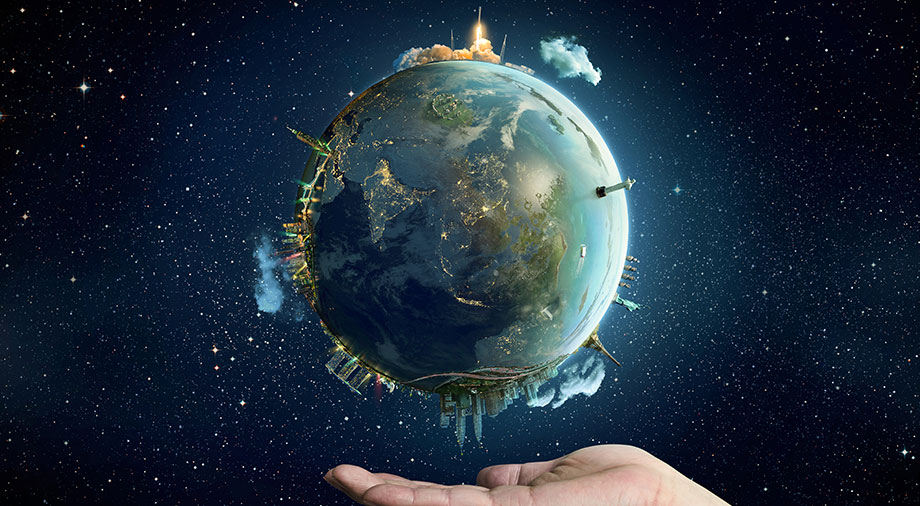Vladimir Vernadsky is known today as the first president of the National Academy of Sciences of Ukraine and the founder of the National Library of the Ukrainian State, which is today named after him. However, his contribution to science is even more significant: Vernadsky developed the concept of the “noosphere,” which explains humanity’s place in the world. This concept, first formulated in the early 20th century, is still relevant to modern science today.
But who was Vladimir Vernadsky? How did the term “noosphere” emerge, and how profoundly has this doctrine influenced humanity’s perception of its place in the universe and its responsibility for the planet’s future? Read on to find out!
Prerequisites for the emergence of the noosphere concept
At the beginning of the 20th century, humanity faced new challenges: overpopulation, global warming, and environmental pollution threatened the planet, while people began to realize that reserves of traditional energy sources and fresh water were limited. At the same time, the gap between the strong and the weak grew wider, with the interests of less developed countries being subordinated to those of larger and wealthier nations.
Gradually, a new scientific field, “global studies,” began to take shape, focusing on planetary processes and seeking solutions to global problems. Humanity faced a complex task, and scientists and philosophers proposed various ways to address it. During this period, numerous theories and concepts emerged, including the ideas of Vladimir Vernadsky.

Source: istpravda.com.ua
Vladimir Vernadsky (1863–1945) was an ethnic Ukrainian whose life and scientific work were connected with several countries, including Ukraine, Russia, and France. In 1918, he played an active role in establishing the Ukrainian Academy of Sciences and became its first president.
He is recognized by the global scientific community as one of the founders of several scientific disciplines, including geochemistry, biogeochemistry, and radiogeology. His contributions to these fields remain invaluable.
How the doctrine of the noosphere emerged
According to Vernadsky’s theory, the noosphere (from Ancient Greek: mind + sphere) is the sphere of interaction between human intellect and nature, representing the final of three successive phases of Earth’s development, after the geosphere and biosphere. He described the noosphere as a space where nature and society interact: an area where human intellect influences the development of both, making human activity the key driving force. Vernadsky defined the noosphere as the next stage of evolution and a new state of the biosphere, in which humans, equipped with knowledge and technology, can transform the surrounding world on a planetary scale.
Although Vernadsky is credited with the concept of the noosphere, the term itself was first used by the French priest Pierre Teilhard de Chardin in his work, Cosmogenesis (1922). According to some sources, Vernadsky first heard the term from their mutual friend, the French philosopher and mathematician Édouard Le Roy, who mentioned the idea of the noosphere in his lectures at the prestigious Collège de France in 1927. Other sources suggest that Le Roy himself coined the term and collaborated with Teilhard de Chardin on the noosphere theory. In his letters, Vernadsky himself noted that he borrowed Le Roy’s ideas on the noosphere from his article “The Origin of Man and the Evolution of Intelligence” and subsequently developed the concept within the framework of biogeochemistry.

Source: hungarianconservative.com
In any case, De Chardin described the noosphere as a “thinking layer… located above the biosphere and unconnected to it.” As a theologian, he viewed the noosphere as a spiritual realm that humanity would reach only after transcending the material world—in other words, the biosphere.
By contrast, Vernadsky, who considered himself a “cosmic realist,” was more of a materialist and atheist and assigned the noosphere a very different significance. He saw the noosphere as a part of the biosphere, one that humans could physically transform through their activities. In a book titled The Biosphere (1926), he wrote that intelligence had allowed humans to reach places inaccessible to any other living organisms, making it difficult to define the true boundaries of the biosphere.
Vernadsky was convinced that humanity was continuously evolving and that, even if the expansion of the noosphere led to negative consequences, human intellect would be capable of overcoming them. In this sense, he can be considered a more traditional scientist than his French colleagues, who also worked on the concept of the noosphere.

Source: wikipedia.org
Vernadsky was writing in the first half of the 20th century, when many modern scientific concepts had not yet emerged or were only beginning to take shape. This makes it even more fascinating to see how he managed to foresee their development and explain them from the perspective of a scientist of the past century.
The transition from the biosphere to the noosphere and technosphere
Throughout his work, Vernadsky described the biosphere as Earth’s “shell” with a unique thermodynamic field and whose development is shaped by the activity of living organisms. Humans are also part of the biosphere and, in his view, a “mighty geological force.” He emphasized that the transition to the noosphere is not a one-sided process but a co-evolution, where humans and nature evolve together. In other words, as humans transform the biosphere, they also change under its influence.
Vernadsky first spoke publicly about the biosphere in his lectures at the Sorbonne. He believed that human activity had become a new geological force, comparable in scale to other natural processes. “Living organisms are a function of the biosphere and are materially and energetically bound to it in the closest way—they are its defining geological force,” he argued. He pointed out that humans disrupt the balance of the biosphere, interfere with natural cycles, and alter the composition of the planet. As examples of large-scale human impact, he cited deforestation, changes in river water regimes, and the extraction of mineral resources.
The concept of the biosphere appeared long before Vernadsky. It was described by Lamarck at the beginning of the 19th century, and the term itself was proposed by Suess in 1875. However, the holistic doctrine of the biosphere is undoubtedly one of Vernadsky’s major contributions.

Source: humanenergy.io
Vernadsky was convinced that he and his contemporaries were witnessing the transition of the biosphere into the noosphere. Through intelligence, humans had altered their environment and living space, just as they continued to shape their own future. According to Vernadsky, this future directly depended on the intellectual activity of the planet’s inhabitants. With the transformation of the biosphere into the noosphere, it would be up to humans to establish new rules of interaction with nature, no longer relying on its self-regulating processes.
Vernadsky insisted that the formation of the noosphere was a long and complex process, requiring changes not only in methods of production but also in human thinking itself. In his view, the transition to the noosphere was possible only within the framework of social progress, wherein all of humanity would unite to address global challenges.
Modern followers of Vernadsky’s ideas also highlight the notion of the “technosphere,” the sphere created by humans through technical means and technologies. The interaction of the technosphere with the biosphere and noosphere is a key aspect of today’s environmental crisis. On one hand, the uncontrolled expansion of the technosphere exacerbates ecological problems; on the other, technology can help mitigate them, as seen in the transition to renewable energy sources.
The main components of Vernadsky’s noosphere
While studying the patterns of the development of life on Earth, Vladimir Vernadsky arrived at several key conclusions that formed the basis of his ideas about the noosphere:
- Living matter on Earth did not originate from non-living matter; life is a unique and self-sufficient phenomenon.
- There were no “lifeless” periods in Earth’s geological history; life has always existed on our planet and has played a key role in its formation.
- Modern living matter is genetically connected to all living organisms of the past, which confirms the evolutionary kinship of all life on Earth.
- Living matter today exerts as strong an influence on the Earth’s crust as it did in previous geological eras.
- At any given time, a constant amount of atoms is present in living matter (the law of conservation of living matter).
- The Sun serves as the source of life on Earth, as the energy of living matter is the transformed and accumulated energy of the Sun.
These theses formed the foundation of Vernadsky’s noosphere theory, from which three key ideas can be highlighted:
- The first is connected to the geological “eternity” of life. Vernadsky believed this could be a manifestation of some cosmic principle, a connection between Earth and the cosmos. Today, this idea encourages humans to look for signs of life beyond Earth.
- The second idea is about humans as a powerful geological force capable of transforming the biosphere on a planetary scale. Although Vernadsky warned about the potential destructive consequences of human activity, he also believed that people could live in harmony with nature.
- The third idea is that the path to the noosphere is paved by scientific consciousness and the spread of knowledge. Vernadsky himself dreamed of creating an international network of research institutions focused on studying the biosphere and helping people approach it responsibly.

Credit to National Geographic
Nearly 100 years later, humanity’s impact on the planet has reached critical proportions. The concept of the noosphere as proposed by Vernadsky has become not just relevant but vital for the survival of humankind. The scientist himself emphasized that the formation of the noosphere is associated with the enormous responsibility that rests on humanity and that only a rational and conscious approach to nature will ensure the harmonious development of the noosphere.
The contribution of the noosphere theory to modern science
Vernadsky believed that human thought would become the force that would shape the planet and life on it. He wrote that “The mind introduces powerful new processes into the mechanism of the earth’s crust, the like of which did not exist before the appearance of man.” Vernadsky saw a managed noosphere as the foundation for sustainable development and the survival of humanity.
Vernadsky was also interested in such global issues as the distribution of population on Earth, the transition from subsistence farming to production farming, and the development of a scientific worldview. His thoughts on these and many other processes were presented in his “Essays on the History of the Modern Scientific Worldview,” which formed the basis of the book Works on the General History of Science. Even today, these and other of Vernadsky’s works remain relevant.
Unfortunately, many of Vernadsky’s works were not known outside of the Soviet Union during his lifetime. Indeed, only after his death were some of them translated into English, French, and a few other languages. For example, the full translation of his landmark work, The Biosphere, which was originally published in 1926, first appeared in English in 1997, 52 years after the author’s death.

The main ideas of the noosphere theory remain relevant today. As Vernadsky wrote: “This process—the complete settlement of the biosphere by humans—is determined by the course of the history of scientific thought, closely linked to the speed of communications, the success of transportation technology, and the possibility of the instant transmission of thoughts, their simultaneous discussion everywhere on the planet.” Today, humans have indeed mastered nearly all corners of the Earth, and information unites people worldwide through the internet.
At the same time, the negative impact of humans on the planet is intensifying, and environmental issues have become global, threatening the biosphere itself. Humanity, in Vernadsky’s words, has become a “mighty geological force,” but today, this force is often directed toward destruction. The scientist, who lived through two world wars, also considered the end of war as an important condition for the existence of the noosphere. Unfortunately, this condition has not yet been fulfilled, and military conflicts continue, with Russia’s aggression against Ukraine serving as tragic proof of this.
The noosphere and space
In his later works, Vernadsky discussed the possibility of expanding the boundaries of the biosphere and the influence of outer space on its development. He emphasized that life on Earth is impossible without the Sun and did not rule out the possibility of life originating from bacteria brought from space.
Although Vernadsky’s theory did not directly impact space exploration, its principles resonate with its development. The concept of the noosphere implies that humanity is capable of going beyond Earth. Modern space exploration follows the logic predicted by Vernadsky: from studying Earth to plans for the colonization of other planets. In other words, the scientist’s ideas are reflected in ambitious plans for the exploration of our Solar System, including the prospect of colonizing other planets. Other projects, such as the satellite monitoring of Earth, also embody Vernadsky’s views on expanding the noosphere beyond Earth’s limits. The scientist even predicted space travel 15 years before Yuri Gagarin’s flight, noting that the noosphere could even propel humans into “outer space.”

Source: NASA
Vladimir Vernadsky and his contemporaries lived during the dawn of the nuclear age, long before humans ever traveled to space, walked on the Moon, or decoded the human genome. In the early 20th century, when global studies were emerging, Vernadsky foresaw that humanity would be able to alter the biosphere on a planetary scale and that reason and scientific knowledge would play a key role in this process. Although many of the scientist’s works were unavailable to the global scientific community during his lifetime, his ideas about the noosphere, biosphere, and the role of humanity in the evolution of the planet turned out to be prophetic and remain relevant. Today, humanity faces global environmental challenges, and Vernadsky’s proposed concept of the noosphere has become even more relevant, as it emphasizes the need for a rational and responsible attitude toward nature for the future of the entire planet.




